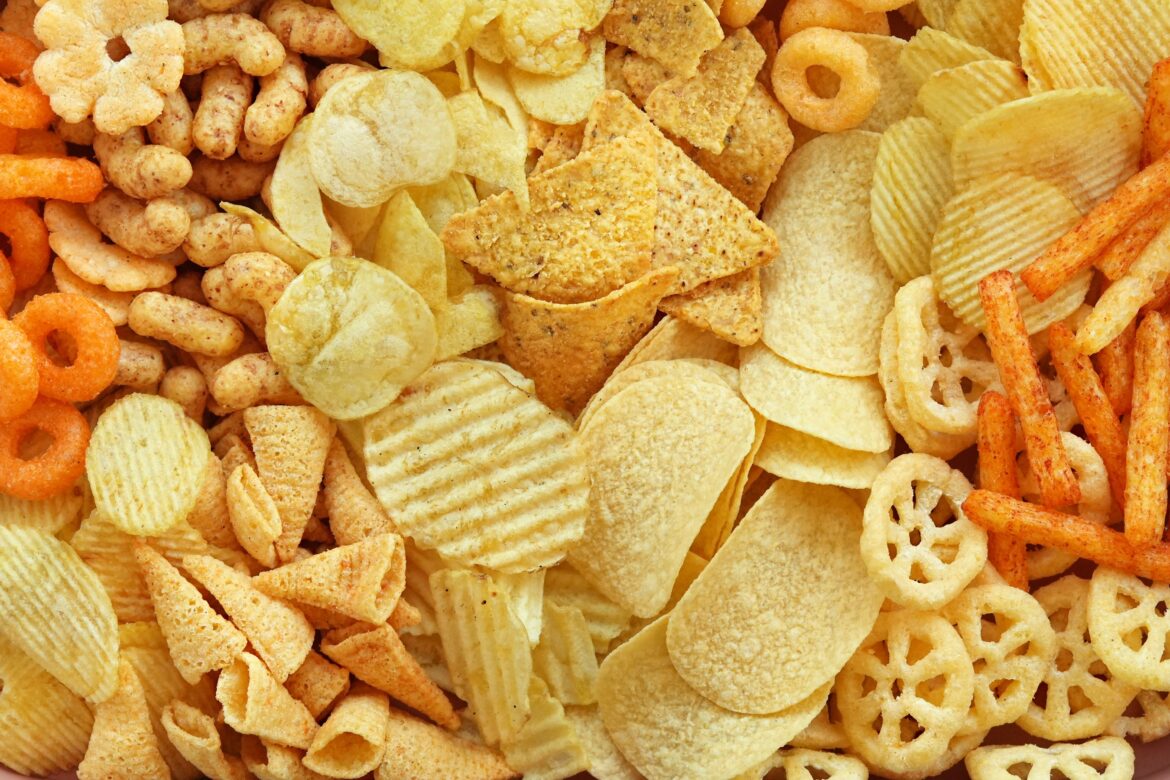Ultra-Processed Food and Your Health
This year, the American Journal of Preventive Medicine published an article highlighting a correlation between ultra-processed foods (or UPFs) and premature “all-cause” mortality. This means that UPFs increased the total number of deaths from any cause in a sample size within a given period of time. It is understandably scary to think that the food we consume might be doing more to kill us than keep us alive. For Americans and those living in the global north (other hyper-industrialized countries like Canada, the UK, Australia, and Japan), this study is particularly important.
Currently, the food and beverage industry, governments, NGOs, and other food-related organizations use Carlos Augusto Monteiro’s Nova classification system to define processed food. Monteiro created Nova in Brazil in the 1990s after having observed a trend toward increased obesity in the country and emphasized the importance of classifying the ways foods are processed rather than just their nutritional content. He proposed four different categories:
Group 1 – Unprocessed or Minimally-Processed Food
This group has the least amount of human intervention—for example, oats before they are rolled or tea leaves before they are dried and ground into matcha. It’s best to think about this category as food that is as close to nature as physically possible. When you step into the produce or butcher section of a supermarket, almost all the food you see belongs in this group: fresh fruits and vegetables, raw meat (not including sausage or ground meats). These foods have not been significantly altered from their original form, not even by the addition of seasoning like salt and pepper.
It should be noted that foods having undergone particular methods of preservation—say, with climate (flash-freezing) or chemical control (sulphur dioxide)—can still be placed in this group. Producers of minimally processed foods often seek to enhance shelf-stabilization without making drastic changes to their original form. More examples include small-scale milling, pasteurizing, canning, jarring, and drying.
Group 2 – Processed Culinary Ingredients
Like the name suggests, this is where food becomes ingredients. Group 2 extracts products from the foods in Group 1 through simple forms of processing. This includes processes such as pressing olives for oil, mining for salt, and concentrating juices.
Group 3 – Processed Food
This group is what researchers at the Universidade de São Paulo call food “modified by relatively simple industrial processes […].” The category includes any kind of meal or product that you can make at home. If you have wondered why restaurant food tastes so different, one of the reasons is the accessibility of hyper-industrial machines that change foods into meals you can’t make with a wooden spoon, knife, and a pan. Most homes don’t have pizza ovens, sous-vide machines, or centrifuges, because, in a domestic setting, this equipment would be impractical and exorbitantly expensive—although innovations in kitchen equipment in recent years are trying to change that. The goal of companies like Breville and Ooni is to bring the production of UPFs into your home. Group 3 examples might include products you could buy at a Greenmarket, such as breads, cheeses, and pickles. Canned goods also belong here, as does wine. You could say the category includes any meal you make at home, but it would only count if made from scratch. Packaged ravioli or even salad (depending on whether you used bottled dressing) would belong in Group 4.
Group 4 – Ultra-Processed Food and Drinks
You know you’re eating a UPF if you can’t pronounce or understand all the ingredients on the nutrition label or don’t recognize the ingredients’ original forms, textures, tastes, or smells in the food. These products can’t be made at home or rarely in a professional kitchen, but they are made easily in a factory setting. Any foods with additives that artificially thicken, color, or mask undesirable flavors also belong in this category.
Ingredients in this group can also be extracts and extractions—liquids and powders that are a particular substance or compound found in a naturally occurring food. Extractions can only be made in lab and factory settings. Examples would be vanilla extract, bitters, or protein powder.
UPFs don’t exactly expire; they taste the same anywhere you buy them, and they are convenient. These foods are engineered to be as tasty as possible, usually with the help of an exorbitant amount of salt, sugar, fat, acid, and/or monosodium glutamate—all naturally occurring compounds, but added in excess.
Over the past few years, the Nova system has been criticized for being too broad and inconsistent. There are alternatives, but Nova is by far the most dominant system in the food industry. You could argue that the only way to consume a non-processed food would be to get it directly from the source itself, by eating an apple while it was still on the tree, or take a bite of a cow, because even picked fruit and raw meat could be considered processed. To eat food, you have to process it in some way. These are the semantic issues that food and beverage corporations exploit to skew the definition of a UPF.
The Nova system fails in two ways: It is designed to be a language for politicians and corporations as opposed to the people it was intended to protect, and the same system that was implemented to protect people is being used to manipulate them.
If you are confused about what counts as a UPF and what doesn’t, you are not alone. An interactive quiz created by the New York Times in 2023 to test your knowledge of processed foods acknowledges the ambiguity in Nova groups and that the stratifications are not intended for laymen. The correct answers appear deceptively simple.
UPFs, when consumed in moderation, are less of a concern for our health—but that is exactly the issue. In certain situations, when USAID distributed food to foreign conflict zones, they often gave out “high-energy biscuits.” These calorie- and nutrient-dense cookies can feed large groups of people and remain edible for years when left unopened. However, they cannot be made at home with conventional cooking equipment. High-energy biscuits are UPFs intended to keep people from starvation.
Nevertheless, UPFs comprise a significant portion of the diets of Americans and those living in other hyper-industrialized countries in the global north. According to a study published in The Journal of Nutrition, in the United States, more than 50 percent of what adults eat, both at home and away from home, contains UPFs. Another study that was published in the American Journal of Preventive Medicine not only confirms this statistic, but also compares it to Brazil, a country in the global south (countries yet to hyper-industrialize or industrialize), whose average UPF intake was approximately 17 percent for adult diets. So the correlation between increased all-cause morbidity and UPFs is extremely relevant for Americans and, most likely, for anyone reading this article.
Americans’ hunger for UPFs results from the fact that these foods are both addictive and inescapable. They are ubiquitous. Wherever you shop, despite filling up your basket with foods labeled “all natural” and “organic,” most of what you buy is probably ultra-processed. And it doesn’t help that processed foods are monoliths in American politics. The UPF industry spent at least $1.15 billion between 1995 and 2020 on lobbying in the United States, with Coca-Cola accounting for 10.1 percent of that.
The U.S. government is slowly going after UPFs and their manufacturers, yet not to the extent we need them to. While RFK, Jr.’s Make America Healthy Again initiative targets seed oils and artificial dyes, it fails to look at the bigger picture: the pervasiveness of ultra-processed foods in the American diet at large. The additives MAHA seeks to eliminate in the American diet are only a small part of the problem. And there is a similar problem at the local level.
In the state of New York, the Supplemental Nutrition Assistance Program (SNAP) and Electronic Benefit Transfer (EBT) minimums for a single person are $292 a month (as of September, 2025), and even with programs like GrowNYC’s Health Bucks and Farmers Market Nutrition Program checks, that still is not enough to purchase a significant amount of fresh or minimally processed foods. Food in New York City is expensive and its price is only rising.
When it comes to regulation, the objective is not to eliminate processed foods. According to the Nova system, that would be impossible because part of the way humans digest food requires pre-processing outside of the body. Monteiro intended to inspire policies that create food systems with the least amount of processed foods possible. The goal of the researchers at the Universedade de São Paulo was to combat “the pandemic of obesity and other chronic diseases affecting the planet” that they linked to UPFs. Yet, targeting obesity pandemics and chronic diseases is not enough. While Monteiro and his team sought to minimize UPFs in Brazil’s food supply, Nova lacked initiative to repair inequity in how UPFs are distributed and consumed. For example, in the United States, communities of color and under-resourced communities are disproportionately targets of UPF advertisement campaigns. This means we not only need to pay attention to how UPFs affect humanity as a whole, but also how UPFs affect different groups of people.
Recently, there has been some pushback against UPFs in the United States with bipartisan support. This year, the California State Assembly passed a bill that seeks to “phase out” UPFs from California school meals by 2032, the first of its kind in the country. While Assemblymember Jesse Gabriel’s (the author of the bill) website emphasizes bipartisan success and UPFs’ correlation with physiological and neurological issues, neither democratic nor republican leadership acknowledges how UPFs have affected communities in the United States inequitably. While UPFs affect all Americans, they do not affect all Americans the same.
There is, however, some meaningful action that anyone motivated to reduce UPFs can take. Currently, the FDA and USDA have extended the period for public comments about UPFs until October 23, 2025. This means you are still able to make a written or electronic submission detailing your concerns. To submit a comment, follow this link.


